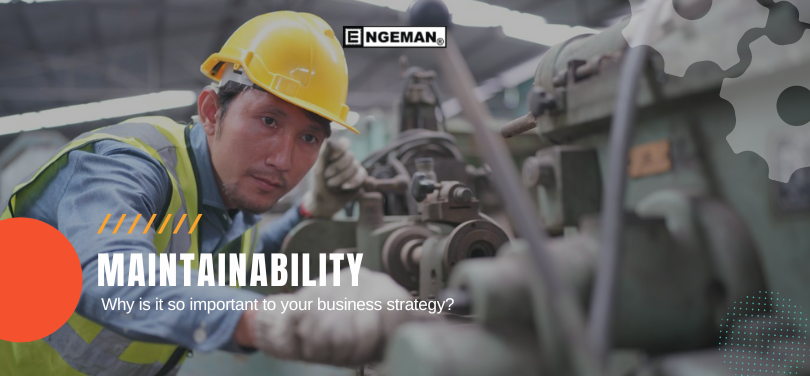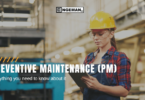Among the decisive factors for the success of a company, maintenance is undoubtedly one of the main ones. Keeping all the equipment in perfect operation enables production to work without interference and to produce quality items. As a result, all customers are served without delays and the business reputation will be positive in the market. This ensures the competitiveness and the success of the organization.
But if your company suffers from maintenance delays and problems, know that you have serious troubles! Your managers must get aware of the maintenance processes if they want to ensure the reliability and availability of their equipment. In order to get this, the maintainability of equipment is a factor that comes to ensure the success of its processes in the maintenance sector.
But what is maintainability after all? Calm down, in this article we will explain everything to you and discuss its importance in asset maintenance. Enjoy reading!
What is the definition of maintainability?
It is essential for the industry context to understand the maintenance process. With the operation of equipment, it is natural that they need at some point to undergo interventions to ensure their good performance. But how easy is it to perform this maintenance? It is no use to know all the processes, to have all the material at hand if there is some difficulty in accessing the equipment for maintenance. This is defined by maintainability.
The maintainability is defined as “the capacity of an item to be kept or reallocated in conditions to perform its required functions, under specific conditions, when the maintenance is performed under certain requirements and by means of prescribed procedures and means”. We understand how the equipment characteristics or installation allow a greater or lesser degree of ease in the execution of maintenance services.
But can you be thinking, what is the difference between maintenance and maintainability? In fact, the maintenance is a component to the maintainability because it refers to all the activities performed for that equipment or system to work. It may be related to maintenance engineering as it can be considered in projects to make maintenance of assets easier.
Maintainability goals
Maintainability is very connected to the equipment project and to the industrial plant. We could list that maintainability has the following goals:
- Reduction of the expected time for maintenance and consequently costs, through changes in the project for this purpose;
- Use maintainability data to estimate availability;
- Reduction of downtime and consequent increase productivity;
- Improvement in maintenance through the improvement of processes, among others.
We can say that reliability and maintainability go together to ensure equipment availability. Availability related to the operability of the equipment will ensure the maximum productivity of a company. For this to be possible, it is necessary to engage in the areas related to production, from the basic project.
Steps of the maintainability
There are many types of maintenance, some are more common and used than others like the corrective, preventive and predictive maintenance. The maintainability comes as a strategy to make the maintenance improved and can be divided in 6 steps that we will see below:
- Procedure: here begins the entire process of the method planning. At this moment it is thought, created and analyzed to define what is the best strategy to be applied;
- Development: after planning the procedures, it is time to define in detail how would be the development;
- Information: in this step it is communicated to staff the way how the procedures will be performed;
- Anticipation: now is the time to predict possible failures and scenarios that may happen. With this it is possible to create preventive strategies for maintenance;
- Training: the operators’ trainings are carried out in this step to ensure that everyone has the necessary skills to perform the services;
- Retry: it is a cycle, so it is important to perform all the steps for all the assets in the organization. With repetition and routine activities, the chance of errors being repeated will be lower.
Utilizing the maintainability helps in developing the maintenance process in companies. It allows understanding the problems that the sector of maintenance faces so that the same failures are not repeated. As a result, the manager can work more strategically to guarantee the availability of equipment.
How to measure the maintainability?
We already see here that maintainability is an important indicator to demonstrate the degree of difficulty of the maintenance actions. However, measuring or increasing maintainability is part of the routine of managers concerned with maintaining the competitiveness of their business.
There are some ways to perform the calculation of maintainability. It can be calculated by the indicators:
- Repair Rate: indicates how the repair progress time is and the probability of the equipment being repaired within an indicated period of time;
- Median Time To Repair: related to instant repair, relating to the average number of repairs that are performed in a given period of time;
- Mean Time To Repair (MTTR): indicates the time required to repair an equipment.
If the average time for repair is high, it may indicate there is some difficulty in performing maintenance activities, which concludes that the maintainability of this equipment is impaired.
The importance of maintainability
Let’s figure out a scenario that some equipment reveals failures with frequency and that the conditions to repair are good. This will cause a loss of productivity and increase the number of expenses. In this case, it is necessary to create strategies and generate changes in the work environment to overcome obstacles.
Maintainability acts to assist maintenance processes so that equipment performance is not compromised. Thus, it helps in reducing costs, reducing maintenance time, among several other benefits that will influence the success of your business.
It is interesting that maintainability calculations are made from management software, to ensure data reliability and more assertive control from specific management reports. Count on expert management software so that your managers have all the crucial data for decision making at hand! Get to know Engeman®, the most flexible maintenance management specialist software on the market.








